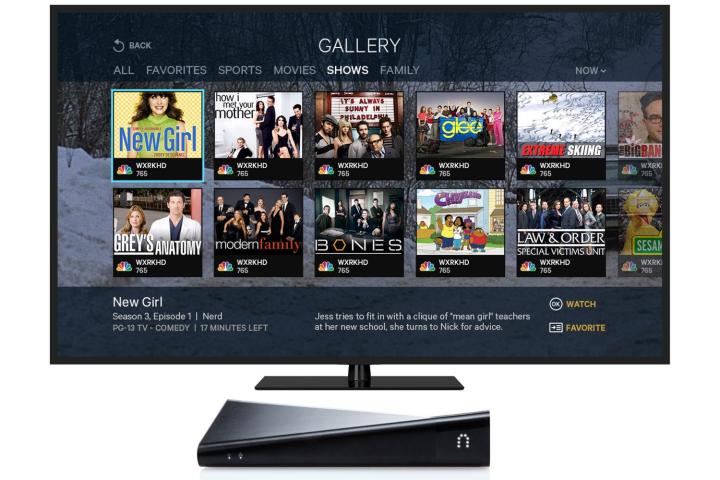
Slingbox M1 ($150)
Replacing the service’s aging entry-level option, the Slingbox 350, the M1 brings that magical combination of additional features and a lower price point out of the gate. For the most part, M1 users will get an experience similar to the 350, including the ability to stream live and recorded TV to PCs and Macs, iOS and Android devices, and Roku and Apple TVs at 1080p resolution. The M1 also offers the same connection options as the 350, which includes Component and Composite connections from your TV or DVR box, but no HDMI.
But the M1 does bring some shiny new features along, including the welcome addition of a Wi-Fi connection, formerly only available on the premium Slingbox 500. The new device will also utilize Slingbox’s latest Slingplayer for Desktop app for PCs and Macs which, according to the company, “dramatically improves setup and configuration.” In addition, the new device will allow for initial setup from your iOS or Android device via the mobile Slingplayer app. However, new users should be aware that, while Slingbox charges no monthly fees, its mobile apps will cost you $15.
SlingTV ($300)
While the M1 is a full hardware update, the new SlingTV will run on existing Slingbox 500 hardware — new software, new name going forward, same box. Slingbox 500 owners will also be able to upgrade their devices with the new operating system free of charge.
Sling TV attempts to meld the convenience of the company’s TV Everywhere features with a new tile interface and electronic programming guide in hopes of taking control of your viewing both on the go and at home. To do so, SlingTV offers search filters from Slingbox’s new cloud-based analytics platform, SlingCloud, which analyzes content by “popularity, reviews and social activity.”
With SlingTV, users get a host of new features for filtering content from their pay-TV service, including search categories such as movies, sports, and kids programming, as well as the incorporation of reviews from Rotten Tomatoes. The system also tacks on new features to enhance sports viewing, including the ability to check sports scores and real-time stats without changing the channel, as well as “Thuzz” excitement ratings, designed to tell you when to switch to a game based on the score, the match-up, or real-time momentum changes.
Users will be able to control the new features via the included remote, as well as remote control via their mobile device through the Slingplayer app.
Just two years after its last upgrade, Slingbox is facing a completely new multimedia landscape with more competition than ever before, from TiVo’s popular Roamio systems to dedicated DVRs from your local pay-TV provider. We’ll have to wait and see for ourselves how the new devices perform, but there is no doubt that Slingbox knows it’s now swimming in deeper waters, and appears to have taken steps to keep afloat.
The Slingbox M1 is slated for release on July 20th, while SlingTV will be arriving in August.


